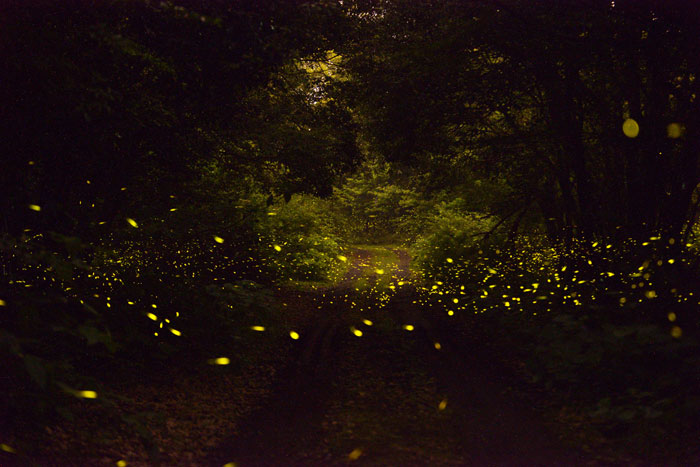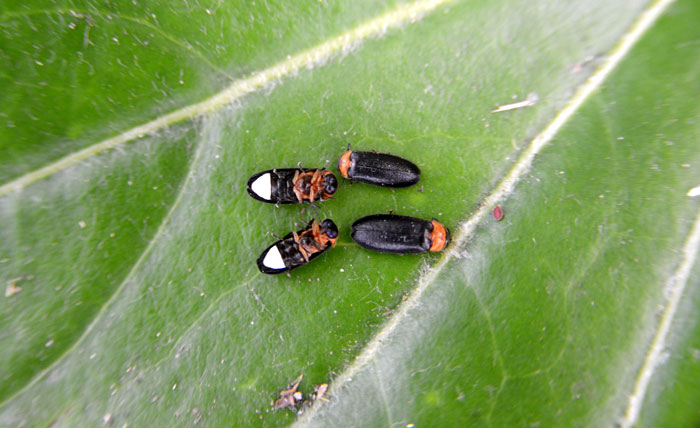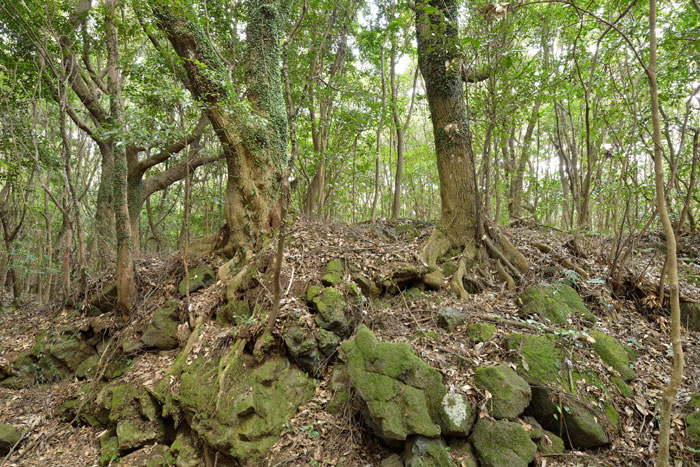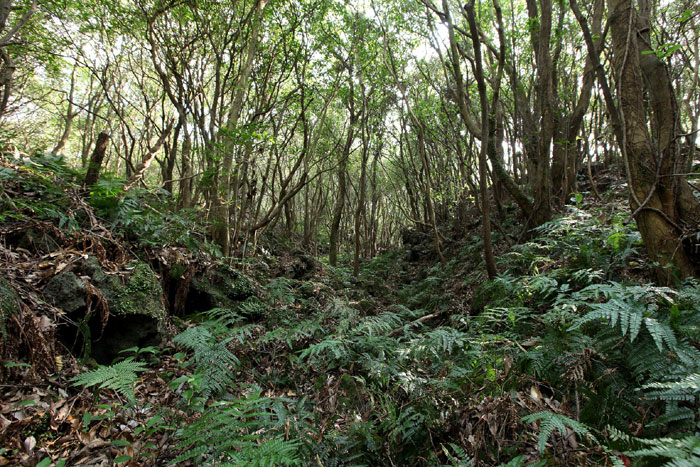Fireflies light up the Cheongsu Gotjawal forest of Jeju Island in summer. A lot of Hotaria unmunsana, an "unmunsan" variety of fireflies, have recently been confirmed to be inhabiting the Cheongsu Gotjawal area, said the Warm-temperate and Subtropical Forest Research Center of the Korea Forest Research Institute (KFRI). These fireflies were first discovered in the same area last year.
From mid-June this year, the research team carried out a nighttime survey around the area where the insects were first found. Based on that research, the team predicted that a similar number of the fireflies would be found as were the previous year.
This means the area has suitable conditions for insects by maintaining an ecologically favorable environment with a good level of humidity, which is agreeable for fireflies.

Hotaria unmunsana live in Korea. Their imagoes can be found from early June to late July. These fireflies were initially found in the Unmunsan Mountain of Gyeongsangnam-do (South Gyeongsang Province) in 1931 and named after the location. They are between 10 and 14 millimeters in size and have dark brown or black bodies with orange paranotal lobes.
The presence of glowworms, commonly known as “fireflies," is known as an environmental indicator of a clean area. These insects are protected by the Korean Government to prevent them from becoming extinct. About 7 or 8 types of fireflies, including the Hotaria unmunsana, can be found in Korea.



Gotjawal is a uniquely formed forest in the lava region of Jeju Island. The naturally formed forest has thick layers of rocks in different shapes and sizes, which cover a thin layer of soil. This soil acts like a sponge as it absorbs raindrops. The absorbed raindrops go directly underground and develop into the crystal clear underground water of Jeju Island.
Cheongsu Gotjawal is considered to be an important area with ecological value. The area has a forest of red bark oaks and camphor trees, which is considered to be the “lungs of Jeju Island.”
By Yoon Sojung
Korea.net Staff Writer
arete@korea.kr

From mid-June this year, the research team carried out a nighttime survey around the area where the insects were first found. Based on that research, the team predicted that a similar number of the fireflies would be found as were the previous year.
This means the area has suitable conditions for insects by maintaining an ecologically favorable environment with a good level of humidity, which is agreeable for fireflies.

Hotaria unmunsana, an 'unmunsan' variety of fireflies, glow at night in Cheongsu Gojawal forest on Jeju island. (photo courtesy of the Korea Forest Research Institute)
Hotaria unmunsana live in Korea. Their imagoes can be found from early June to late July. These fireflies were initially found in the Unmunsan Mountain of Gyeongsangnam-do (South Gyeongsang Province) in 1931 and named after the location. They are between 10 and 14 millimeters in size and have dark brown or black bodies with orange paranotal lobes.
The presence of glowworms, commonly known as “fireflies," is known as an environmental indicator of a clean area. These insects are protected by the Korean Government to prevent them from becoming extinct. About 7 or 8 types of fireflies, including the Hotaria unmunsana, can be found in Korea.

A large number of Hotaria unmunsana are known to inhabit Cheongsu Gotjawal on Jeju Island. (photo courtesy of the Korea Forest Research Institute)


Cheongsu Gotjawal on Jeju Island. (photos courtesy of the Korea Forest Research Institute)
Gotjawal is a uniquely formed forest in the lava region of Jeju Island. The naturally formed forest has thick layers of rocks in different shapes and sizes, which cover a thin layer of soil. This soil acts like a sponge as it absorbs raindrops. The absorbed raindrops go directly underground and develop into the crystal clear underground water of Jeju Island.
Cheongsu Gotjawal is considered to be an important area with ecological value. The area has a forest of red bark oaks and camphor trees, which is considered to be the “lungs of Jeju Island.”
By Yoon Sojung
Korea.net Staff Writer
arete@korea.kr